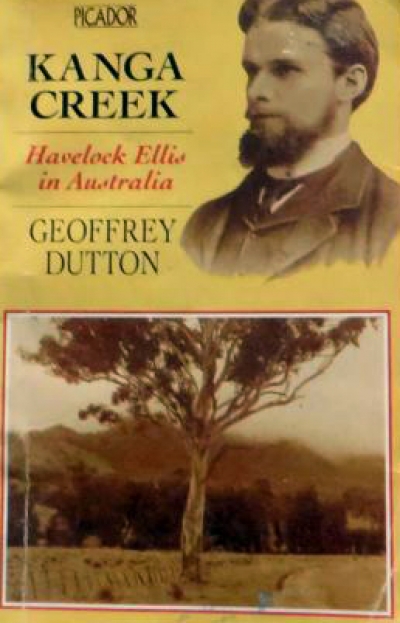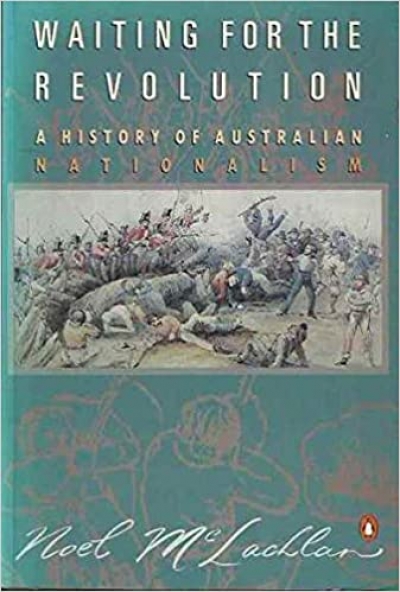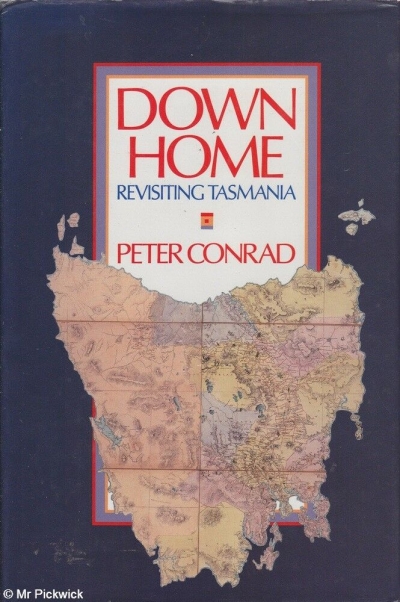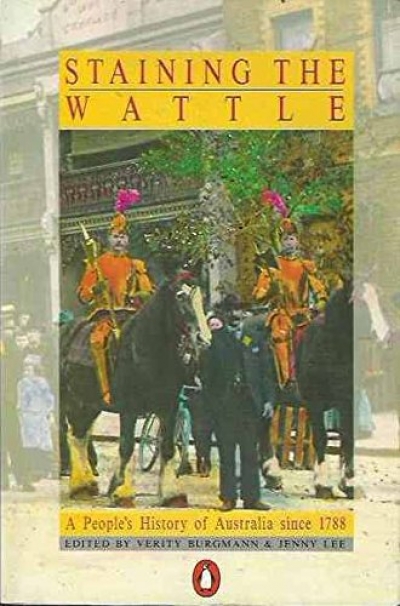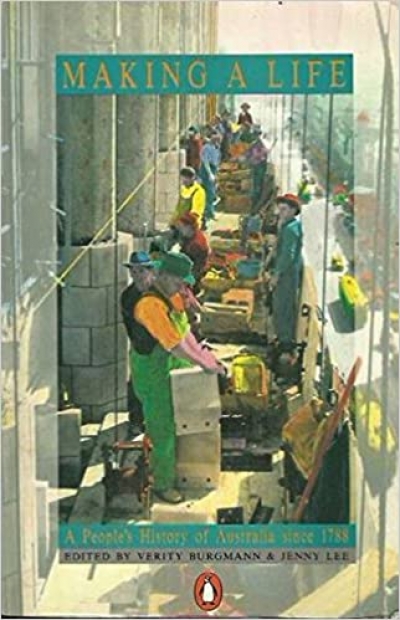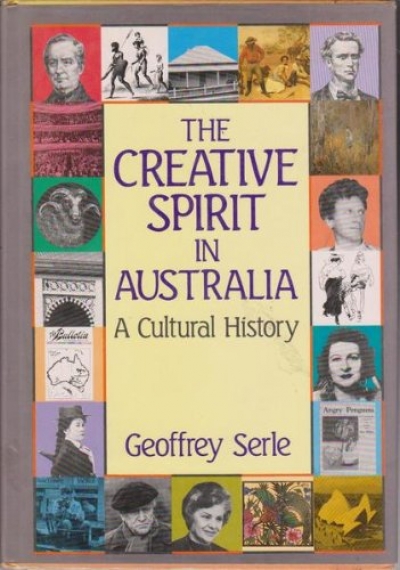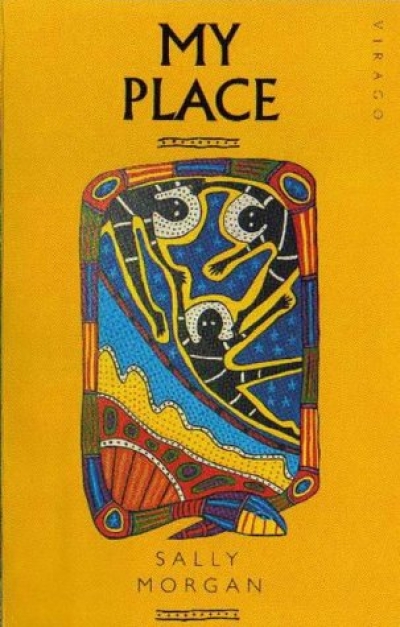Australian History
Kanga Creek: Havelock Ellis in Australia edited by Geoffrey Dutton
Are you (as I am) conscious of suffering from what they call the postmodern condition? You know, the spiritual and moral void within commodity culture, the isolation of individualism, the lack of meaning and all that. Since reading this book, I have begun to think that we should all spend time in Sparkes Creek. Havelock Ellis, who became the great British psychologist of sex, went there over a hundred years ago, as a boy of nineteen:
... (read more)Waiting for the Revolution: A history of Australian Nationalism' by Noel McLachlan
What Revolution? The title’s a teaser! Echoes of Lefty/Godot? You’ll understand if I’m infected by Noel McLachlan’s prose. On page after page, sentences and semi-sentences addressing the reader informally/colloquially (even verblessly!), rich in apostrophes, italics, parentheses, sloping lines between pairs/triads, even quartets/quintets, of words, ending often with exclamation marks and (nine times on one page I’ve counted!) question marks.
... (read more)Back in 1964 before I left the University of Tasmania, Amanda Howard (now Lohrey) introduced me to a serious, nondescript first-year student who, she told me, would go far. Twenty years later Peter Conrad is a Fellow at Christ Church, Oxford, and author of a number of well-regarded books on literature, opera, and television, with a reputation established on both sides of the Atlantic.
... (read more)Staining the Wattle: A people’s history of Australia since 1788 edited by Verity Burgmann and Jenny Lee
Staining the Wattle is the fourth volume of a series edited by Verity Burgmann and Jenny Lee collectively entitled A People’s History of Australia since 1788. People’s history, as understood by Burgmann and Lee, is not popular history, that is to say history written to be of interest to the general reader. This book actually makes very dull reading. Nor is it exactly, at least to judge by this volume, social history, that is to say history dealing with the lives of ordinary people. This book is about politics. People’s history, as understood by Burgmann and Lee, seems, rather, to be ideologically useful history; history as a weapon of social change, as a means for the unmasking of the forces of oppression which have shapes, and for the glorification of the forces of progress which have struggled to reshape, Australian history.
... (read more)La Mama: The story of a theatre by Liz Jones, Betty Burstall, and Helen Garner
The most impressive building in the village of Tepoztlán, near Cuernavaca, is a huge sixteenth century Spanish monastery. But high up on the cliffs, when the mist rises, you can see – if you know where to look – a tiny Indian temple which everyone in the valley knows is where the gods really live.
La Mama is like that – to those who know it. But even the watchers on the bank know that theatre is built on a foundation of human sacrifice, so it is not surprising that La Mama should, on close inspection, turn out to be a regular little charnel house, a bloody altar on which all sorts of queer and callous rituals are performed in the hope of raising up the great gods Laughter and Applause. Apparently I sacrificed a wife and child there myself.
... (read more)The Chief Justice of New Zealand opened his recent judgment on the attempts to suppress the book Spycatcher by Peter Wright with the comment that it was ‘probably the most litigated book in all of history’. That may be correct; although I suspect that the Bible may yet have a slight edge.
The Bible was probably the first book carried from the ships of the First Fleet when they anchored in Sydney Cove in January 1788. From reading the catalogue which accompanies this exhibition, I get the impression that the Rev. Richard Johnson – sent to this country by an organisation with the engaging name of the Eclectic Society – was rather like those annoying people who nowadays clamber aboard a jumbo jet struggling remorselessly on with the entirety of their worldly possessions. Johnson was just such a man. He carried with him no less than 100 Bibles, 350 New Testaments, 500 Psalters, 100 Prayer Books and 200 Catechisms – all made available to him by the Society for Promoting Christian Knowledge. Amongst his most precious possessions were twelve copies of Bishop Thomas Wilson’s An Essay towards an Instruction for the Indians. Sadly, guns and hangings all too soon quickly replaced words and books in the relationship between the newcomers and the indigenous inhabitants of the Great South Land.
... (read more)Making a Life edited by Verity Burgmann and Jenny Lee & Constructing a Culture edited by Verity Burgmann and Jenny Lee
The title A People’s History of Australia is certainly a grand one. Its multi-volume predecessors have more modest titles, such as Clark’s disarmingly simple A History of Australia or the eleven-volume Australians: a historical library. The People’s History’s aspirations go beyond content to embrace audience. This is refreshing to see as many Australian scholars still regard their colleagues as the only audience that matters. The editors say in their introduction that:
... (read more)Australians: A historical library edited by Alan Gilbert and K.S. Inglis
As an ‘imagined community’, Australia ‘imagined imagining needs more that community’, most strenuous imagining than most. Post-colonial? Not really – we are recolonized over and over. Wall Street shivers, the Australian dollar gets pneumonia; Japan revises its shopping-list, and our coal industry verges on collapse. Britain’s hold began to loosen after World War II, but our cultural colonization by the United States was probably effective at least sixty-five years ago, by the time Australian cinema outlets had been secured for Hollywood, and closed off for local producers, through the nefarious block-booking system. With film and television, there never was much political will to defend ourselves; nor was there any, a year ago, to prevent the powerful American magnate Rupert Murdoch from taking over two-thirds of the press in what used to be his own country. There are moments and areas where it still seems reasonable to promote cultural nationalism, l not positive xenophobia.
... (read more)The Creative Spirit in Australia: A Cultural History by Geoffrey Serle
The perennial and increasingly tiresome question of Australian ‘national identity’ will probably diminish rapidly after the point where the design of a new and truly Australian flag is determined.
That it is a question at all, after just on two hundred years of settlement here, is curious. Part of the condition was diagnosed by the late Arthur Phillips in his studies of our colonial culture, The Australian Tradition, where he perceived in this country what he termed ‘the cultural cringe’. Phillips’ book, together with Vance Palmer’s The Legend of the Nineties and Russel Ward’s The Australian Legend, were emancipating surely.
... (read more)Reading My Place by Sally Morgan reminds one of how powerful a book can be when there is an urgent story to be told. This book, let me say at the outset, is wonderful.
Sally Morgan and her four brothers and sisters grew up in Perth in the 1950s and 1960s. They are part Aboriginal, but didn’t know it then. They knew they were darker, different, perhaps they were Greek; their mother and grandmother told them they were Indian and this answer satisfied the kids at school, and them for a time.
... (read more)

